Hemiparasitic plants are those which steal water and nutrients from other plants, but still photosynthesise (so are green). They are an interesting part of the Irish flora, and some can play an important role in grasslands by weakening other plants – particularly Yellow Rattle. I want to run through some of the common hemiparasites found in Irish grasslands and look at their importance for conservation, both as species in themselves and as keystone species which affect the ecosystem they live in. Note that all of these species are in the broomrape family Orobanchaceae. Also note that apart from the Louseworts these are all annuals.
- Yellow Rattle (Rhinanthus minor)
- Red Bartsia (Odontites vernus)
- Eyebright (Euphrasia spp.)
- Lousewort (Pedicularis spp.)
- Yellow Bartsia (Parentucellia viscosa)
N.B. These aren’t the only groups, note that Cow-wheats (Melampyrum spp.) are also present in Ireland, but I don’t know very much about them and I don’t have any good photos. Note also that Mistletoe (Viscum album) is a hemiparasite, though obviously very different to those in the Orobanchaceae. It is not native but does occur in Ireland.
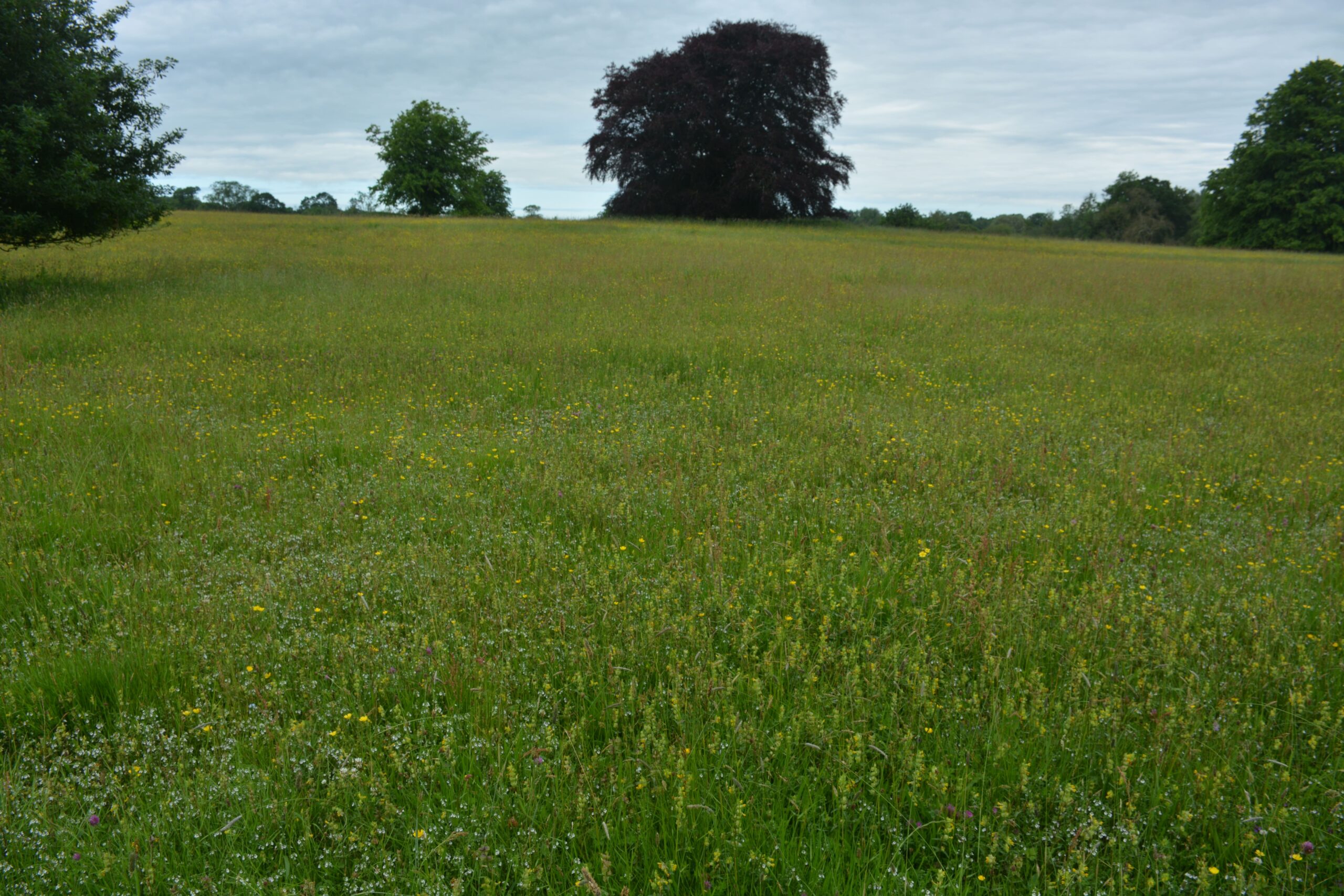
Yellow Rattle
Anyone who has an interest in species-rich grassland in Ireland or Britain is likely to have come across the “meadow-maker” Yellow Rattle. We are told that it increases biodiversity by weakening grasses, letting light through to other plants and reducing competition. The results are often self-evident, as in our field, where Bird’s-foot Trefoil (Lotus corniculatus) grows happily through the Yellow Rattle, providing food for the larvae of the Common Blue butterfly (Polyommatus icarus):
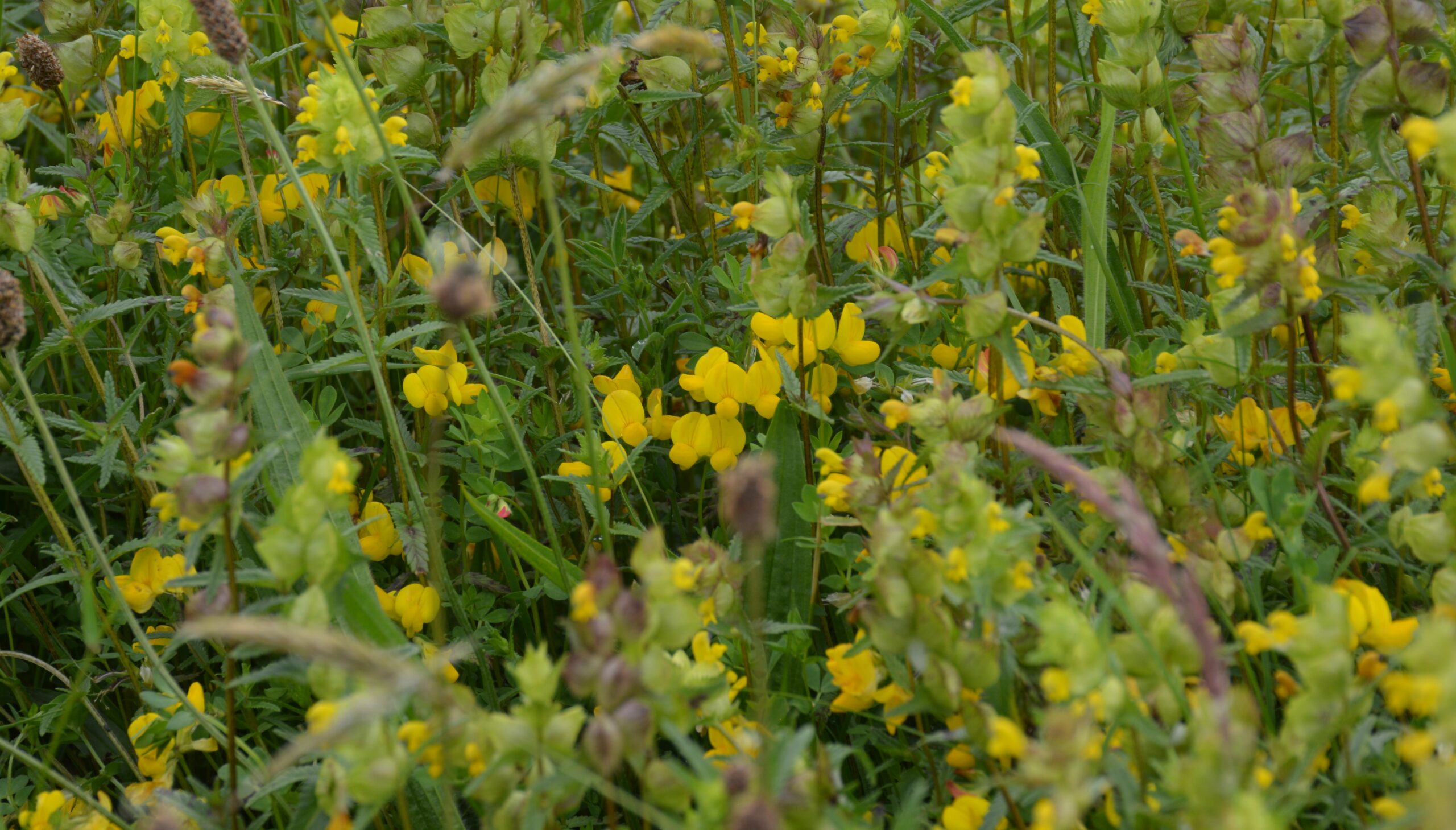
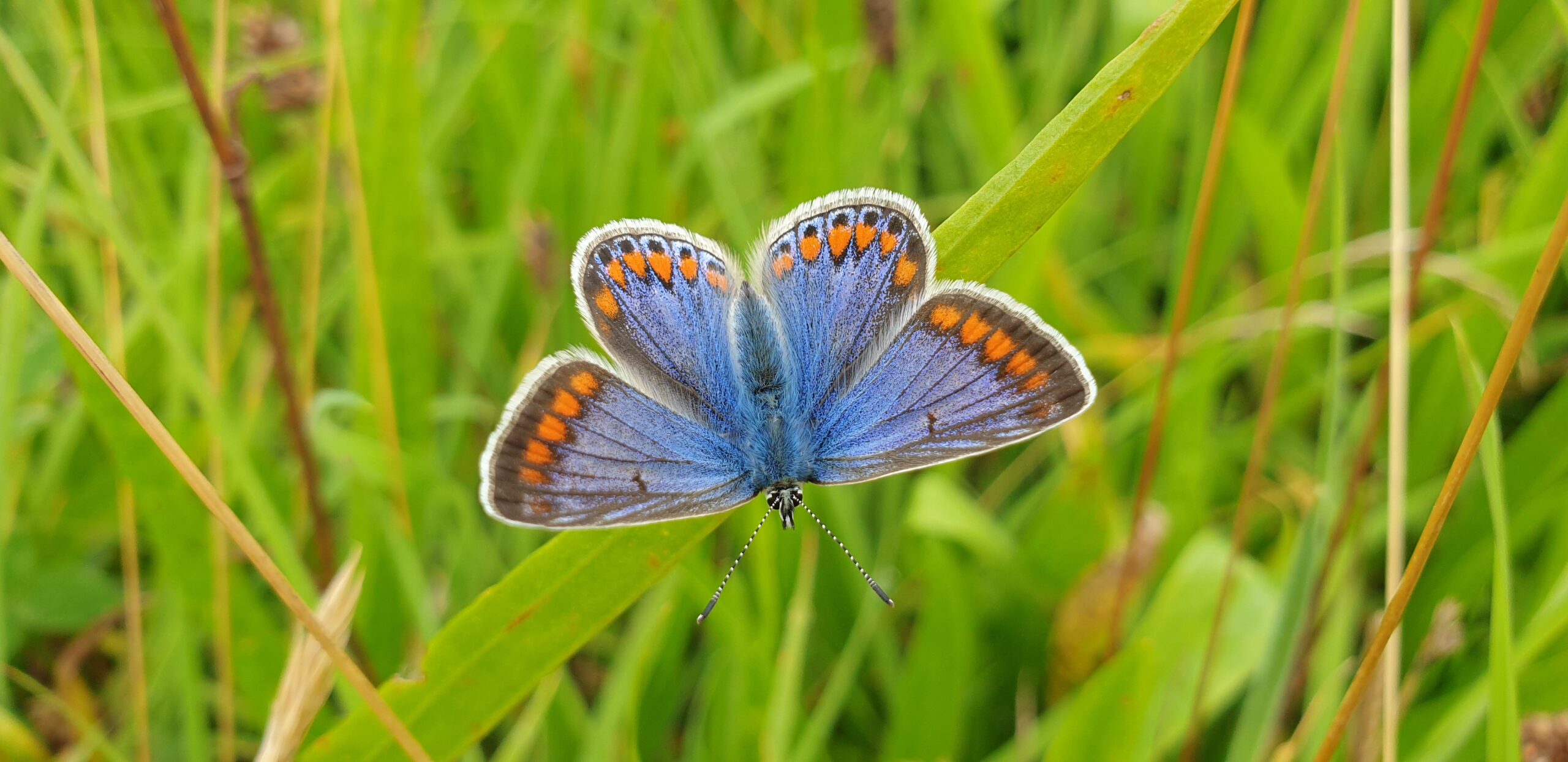
I don’t doubt that introducing Yellow Rattle has benefited biodiversity in our field, but how?
Determining community structure
Community here means the plant species found in a place, and their relative abundance. By changing the structure of plant communities, Yellow Rattle is a keystone species.
- Yellow Rattle will try to parasitise all of the plants growing around it, but grasses can’t defend themselves from its attacks as well as some herbaceous perennials (forbs) can (Jiang et al., 2010). The sensitivity to attack varies, for example Meadow Vetchling (Lathyrus pratensis) is sensitive but Lady’s Bedstraw (Galium verum) is unaffected (Cameron et al., 2005).
- By outcompeting grassses, Yellow Rattle can become very dominant in a grassland, as in our field. This increases the amount of light available to plants in the understory. Light competition is a major driving factor in grassland plant diversity (Eskelinen et al., 2022), so increasing the amount of light available to low-growing plants can increase biodiversity.
- There are winners and losers when community structure changes – some plants (not just grasses!) decrease in abundance due to parasitism and others increase as they are ‘released’ from the pressures of competition. Desey et al. (2015) found that the Common Spotted Orchid (Dactylorhiza fuchsii) is at a massive advantage when another Rattle species is present in Belgian grasslands, as it is not parasitised, and in the parasite’s absence it is vulnerable to being shaded out.
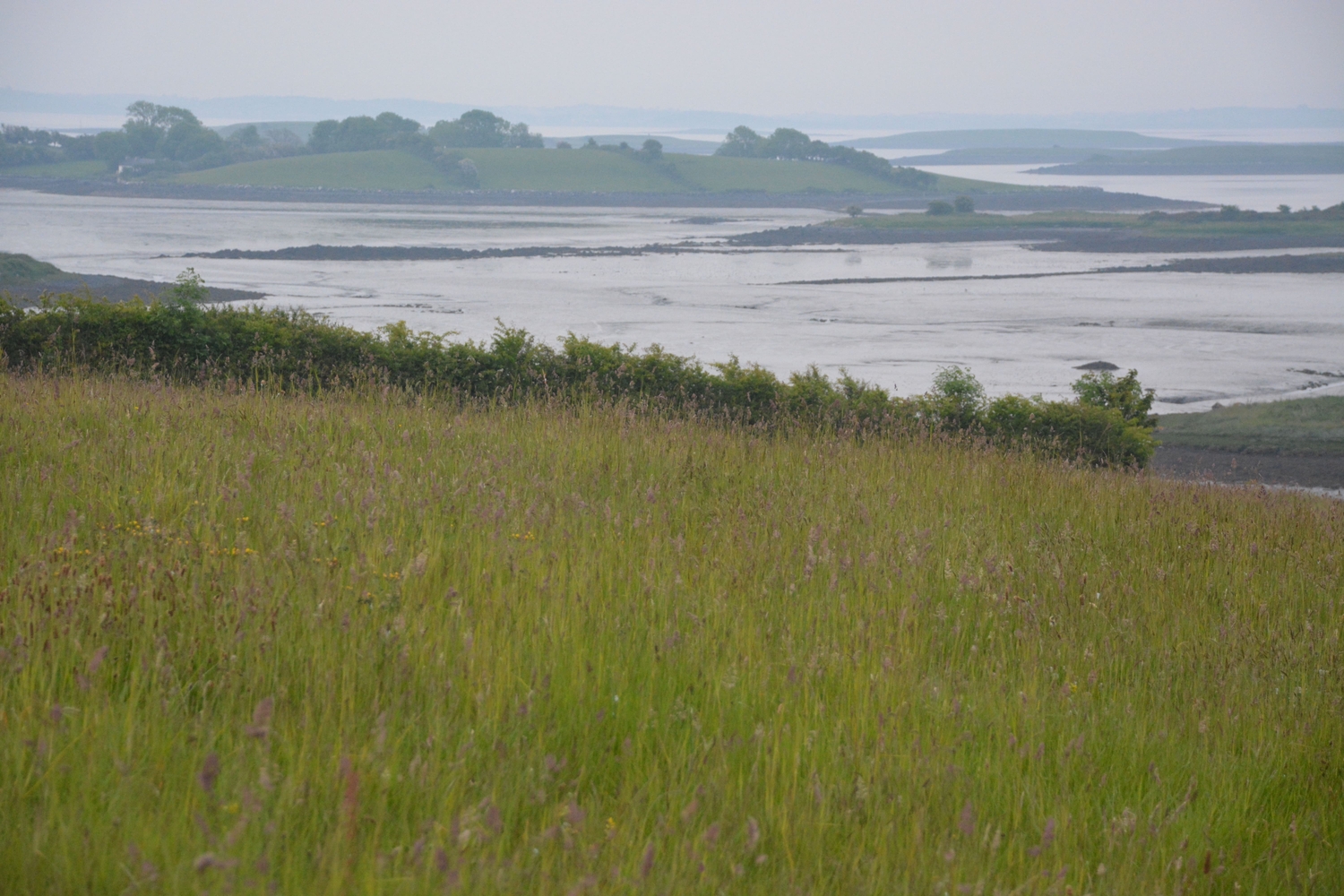
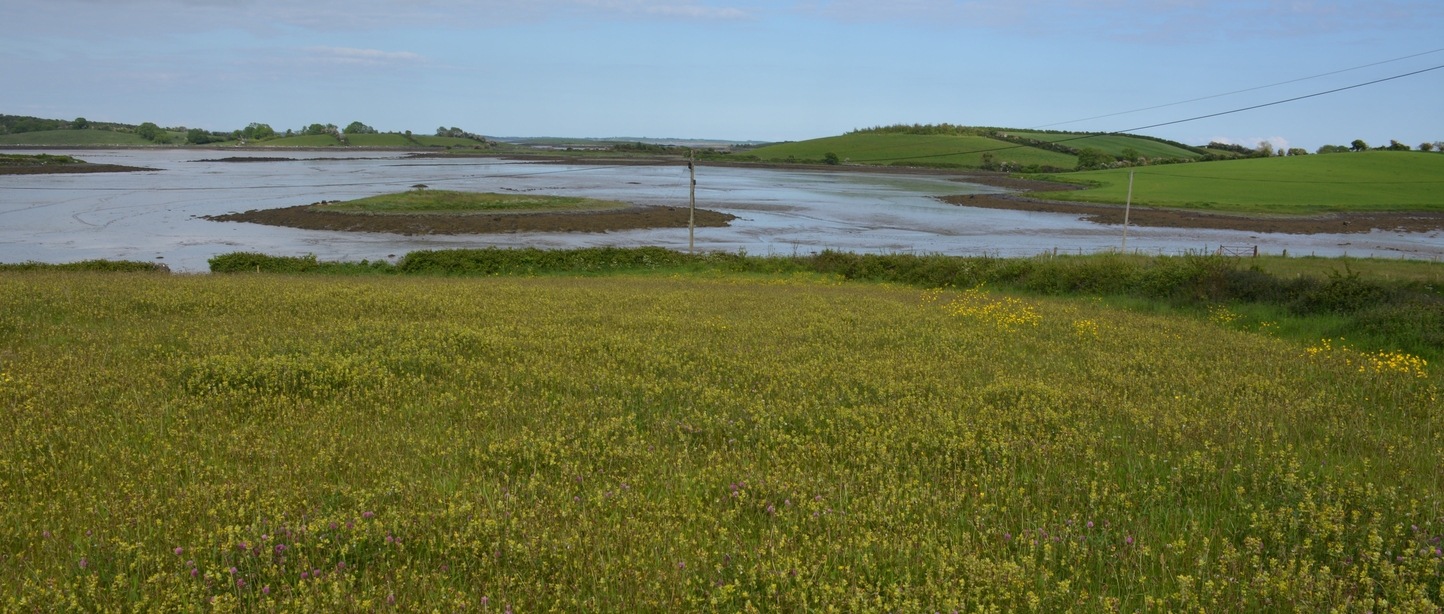
- Yellow Rattle dominance isn’t necessarily static over time – Yellow Rattle can invade a stand of grass, but once it is dominant it can be outcompeted by herbaceous perennials (forbs), which can be themselves outcompeted by grasses. These “rock-paper-scissors” dynamics where no strategy can win out the others can result in the community structure changing constantly (Cameron et al., 2009). This is itself an increase in structural diversity within the grassland.
- Most studies have found Yellow Rattle has a positive or neutral effect on plant biodiversity in grasslands (Chaudron et al., 2021).
Red Bartsia
Red Bartsia is another common species found in many open habitats from machair and saltmarsh to more common types of lowland grassland. It can be very abundant in places, like on Roe Island where it grows along animal trails with another hemiparasite, the Eyebright species Euphrasia nemorosa:

The effects of Red Bartsia on community structure aren’t well-researched, but I did find a cool article showing how it indirectly affects the competition of two grass species on a saltmarsh. When it is absent, Creeping Bent (Agrostis stolonifera) is more competitive than a Salt Grass species (Puccinellia phryganodes), but when it is present the competitive advantage of Bent is reduced (Niemelä et al., 2008; note Odontites litoralis subsp. litoralis is a synonym of Odontites vernus subsp. litoralis, a subspecies not found in Ireland). It seems fairly likely that it affects other interspecies interactions too, and at the high densities it sometimes gets to it could have a notable effect on community structure.
Eyebright
Eyebrights are fab wee plants. They mostly grow in grasslands and heathlands. There are at least twenty species in Ireland, and some are generalist on many host species, while others are more specialised. There are quite a few species of conservation concern in this genus, including the famous limestone specialist Irish Eyebright (Euphrasia salisburgensis). A fairly common one in lowland grassland is Euphrasia nemorosa, which I saw on Roe Island this summer:

I couldn’t find any research looking at how Eyebrights affect community structure. They don’t seem to be looked at as keystone species in the way larger hemiparasites are, but they can be pretty abundant in the understory so this is maybe worth researching.
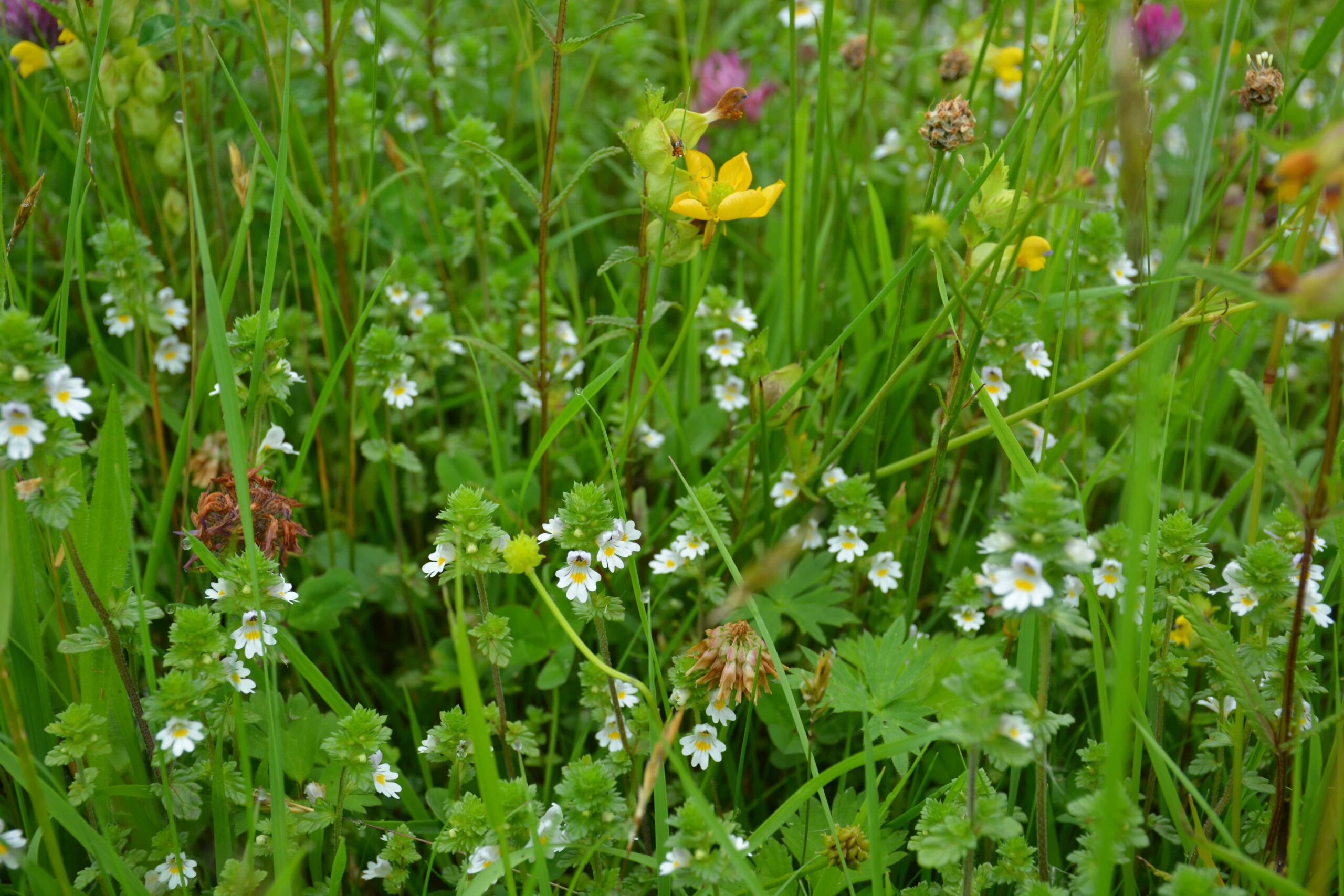
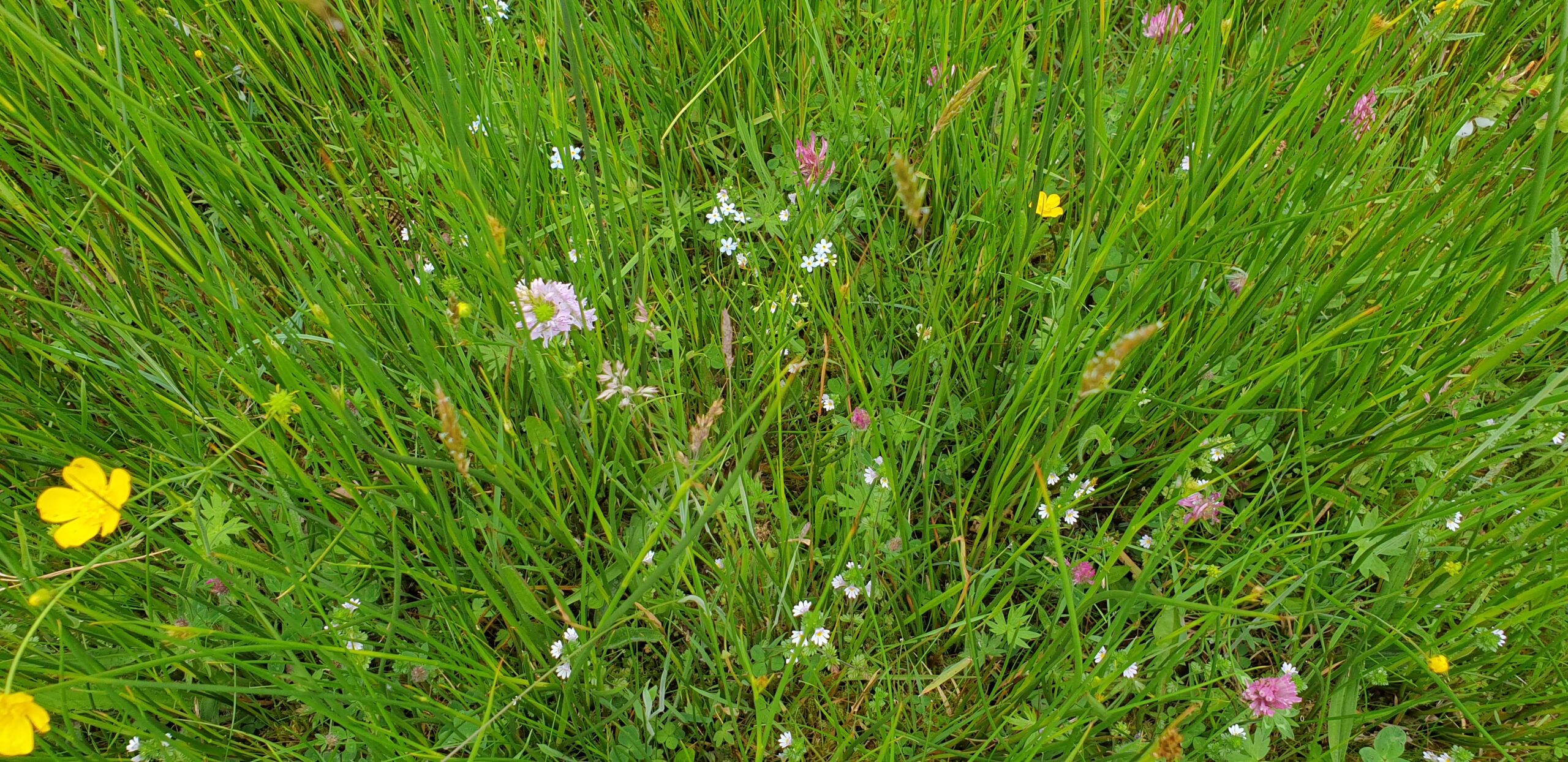
Lousewort
There are two Louseworts in Ireland. The smaller Common Lousewort (Pedicularis sylvatica) is more common, probably most common on damp heath and bog, but it can be abundant on some neutral and acidic lowland grassland – there just isn’t a whole lot of species-rich grassland about to find it in! The other, Marsh Lousewort (P. palustris) is a specialist of wetter habitats like damp grasslands and fens.
Note that Common Lousewort is “perennial, rarely biennial” while Marsh Lousewort is “annual to biennial”.
Common Lousewort could be seen on lowland damp grassland at Lagan Meadows, growing alongside Devil’s Bit (Succisa pratensis). Grazing was stopped at this site so the habitat is no longer appropriate (I suspect it may recover from the seedbed if grazing returned). I got nice photos during lockdown:


Marsh Lousewort is known to have a large impact on fen community structure in England and has been used to encourage less vigorous plant species (Webb, 2020). Decleer et al. (2013) recommended (re)introduction to help with fen-meadow conservation.
Demey et al. (2015) found that Common Lousewort had a fairly minor effect on community structure in semi-natural grasslands in Belgium, but some species did better when it was removed, indicating its parasitism suppresses at least some plants.
Yellow Bartsia
I’ve never seen this species, but I found an interesting paper (Suetsugu et al., 2012) that showed it had a significant impact on grasses and legumes (vetches etc) but not other herbaceous perennials in floodplain grasslands in Japan, where it is an invasive species.
References
Cameron, D. D., Hwangbo, J. K., Keith, A. M., Geniez, J. M., Kraushaar, D., Rowntree, J., & Seel, W. E. (2005). Interactions between the hemiparasitic angiosperm Rhinanthus minor and its hosts: From the cell to the ecosystem. Folia Geobotanica, 40(2–3), 217–229. https://doi.org/10.1007/BF02803236
Cameron, D. D., White, A., & Antonovics, J. (2009). Parasite–grass–forb interactions and rock–paper– scissor dynamics: predicting the effects of the parasitic plant Rhinanthus minor on host plant communities. Journal of Ecology, 97(6), 1311–1319. https://doi.org/10.1111/J.1365-2745.2009.01568.X
Chaudron, C., Mazalová, M., Kuras, T., Malenovský, I., & Mládek, J. (2021). Introducing ecosystem engineers for grassland biodiversity conservation: A review of the effects of hemiparasitic Rhinanthus species on plant and animal communities at multiple trophic levels. In Perspectives in Plant Ecology, Evolution and Systematics (Vol. 52). Elsevier GmbH. https://doi.org/10.1016/j.ppees.2021.125633
Decleer, K., Bonte, D., & van Diggelen, R. (2013). The hemiparasite Pedicularis palustris: “Ecosystem engineer” for fen-meadow restoration. Journal for Nature Conservation, 21(2), 65–71. https://doi.org/10.1016/j.jnc.2012.10.004
Demey, A., de Frenne, P., Baeten, L., Verstraeten, G., Hermy, M., Boeckx, P., & Verheyen, K. (2015). The effects of hemiparasitic plant removal on community structure and seedling establishment in semi-natural grasslands. Journal of Vegetation Science, 26(3), 409–420. https://doi.org/10.1111/JVS.12262
Eskelinen, A., Harpole, W. S., Jessen, M.-T., Virtanen, R., & Hautier, Y. (2022). Light competition drives herbivore and nutrient effects on plant diversity. Nature, 1–5. https://doi.org/10.1038/s41586-022-05383-9
Jiang, F., Jeschke, W. D., Hartung, W., & Cameron, D. D. (2010). Interactions Between Rhinanthus minor and Its Hosts: A Review of Water, Mineral Nutrient and Hormone Flows and Exchanges in the Hemiparasitic Association. Folia Geobotanica, 45(4), 369–385. https://doi.org/10.1007/S12224-010-9093-2
Niemelä, M., Markkola, A., & Mutikainen, P. (2008). Modification of competition between two grass species by a hemiparasitic plant and simulated grazing. Basic and Applied Ecology, 9(2), 117–125. https://doi.org/10.1016/j.baae.2007.01.001
Suetsugu, K., Takeuchi, Y., Futai, K., & Kato, M. (2012). Host selectivity, haustorial anatomy and impact of the invasive parasite Parentucellia viscosa on floodplain vegetative communities in Japan. Botanical Journal of the Linnean Society, 170(1), 69–78. https://doi.org/10.1111/J.1095-8339.2012.01263.X
Webb, J.A. (2020). Marsh Lousewort as an Ecosystem Engineer in Oxfordshire Fen Restoration Projects. Freshwater Habitats Trust. https://freshwaterhabitats.org.uk/wp-content/uploads/2020/07/Marsh-louse-wort-as-an-ecosystem-engineerV3-JW-July-2020for-OFP.pdf [Accessed 27th Dec. 2022]
Leave a Reply to Jake Dalzell Cancel reply